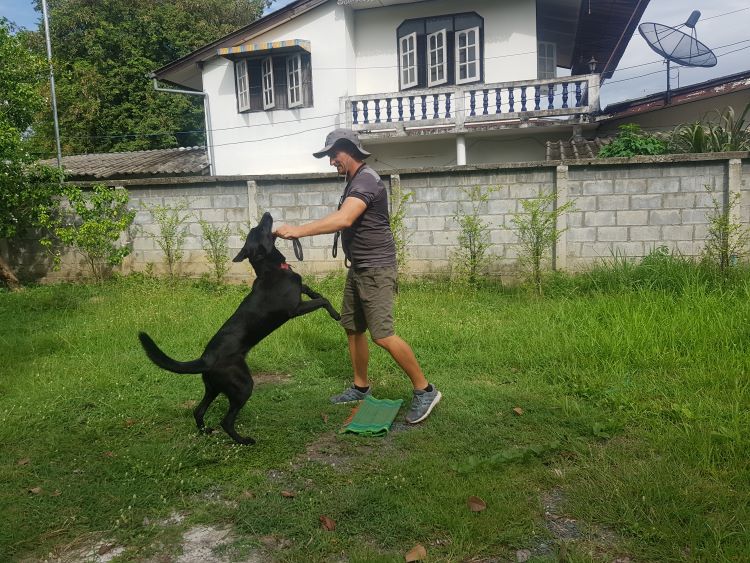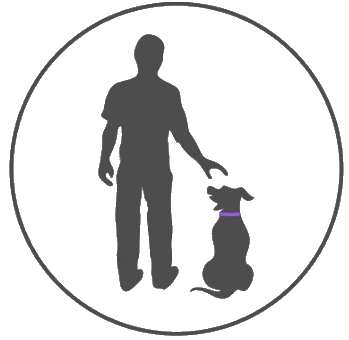Anyone who has ever owned or interacted with a dog knows how complex and intriguing their behavior can be. Dogs, much like humans, have distinctive personalities, unique temperaments, and behaviors that set them apart from one another. Understanding a dog’s behavior is no small task – it requires patience, observation, and knowledge about the myriad factors that contribute to their actions and reactions.
Genetics influence canine behavior
One of the prominent factors that influence canine behavior is genetics. According to research conducted by the Broad Institute, breeds often display characteristics and temperaments that correlate with their ancestral functions. This suggests that a dog’s breed ancestry may predict its temperament and behavior to some extent. However, it’s important to note that genetics do not solely determine a dog’s behavior but set a certain range within which that behavior can vary.
Another significant factor shaping canine behavior is the environment. The surroundings a dog grows up in, the experiences they have, and their overall health status play crucial roles in molding their behavior. Research Fellow Juliane Friedrich from The Roslin Institute & R(D)SVS, University of Edinburgh, emphasizes that we can gain valuable insights into managing dogs and understanding animal behavior in general by studying both environmental and genetic factors.
Maternal influences, too, can affect a dog’s personality and temperament significantly. Experiences during early puppyhood, including those with their mother, can shape a dog’s behavior in its adult life. This is why it is often stressed to ensure puppies have positive experiences during their formative weeks.
Last but not least, training plays an essential role in controlling and guiding a dog’s behavior. A study published in Journal of Veterinary Behavior highlights the relationship between training methods and the occurrence of behavior problems. It suggests that proper training methods can reduce fear and anxiety in dogs and enhance their performance. Dogs are not mind-readers; they require consistent, patient training to understand and follow commands.
In the following sections, we will delve deeper into each of these factors – genetics, environment, health, maternal influences, and training – and explore how they shape the wonderful, complex world of canine behavior. So buckle up for an exciting journey into the heart and mind of your four-legged friend!
The Role of Genetics in Dog Behavior
Understanding dog behavior often seems like deciphering an intricate puzzle. One of the crucial pieces of this puzzle is the role genetics play. Just as our genes shape us, dog behavior is significantly influenced by their genetic makeup. This doesn’t mean that a dog’s behavior is entirely predetermined by its DNA. Instead, genetics provide a range or potential for certain behaviors.
Genetic Predisposition and Dog Personality
Every dog, much like humans, has a unique personality and temperament. These traits are partly shaped by their genetic predisposition. A recent study of 2,155 dog genomes revealed 11 unique genetic regions associated with behavior. Interestingly, these behavioral traits were not specifically tied to any particular breed, hinting at their existence even before modern canine breeding practices.
However, it’s essential to clarify that while genetics do influence a dog’s behavior, they do not solely determine it. Just like how our personalities are an interplay of nature and nurture, a dog’s behavior is also shaped by various factors, including experience, environment, and physiology.
Inherited Behavior Traits in Dogs
It’s fascinating to see how certain traits can be passed down through generations. Dogs are no exception. For instance, herding dogs like Border Collies and Australian Shepherds have been selectively bred for their instinctual ability to control and move livestock. However, it’s important to remember that breeds are not always predictive of temperament and behavior.
Moreover, studies have shown that behavior can be inherited to some degree. This includes a wide array of behaviors, from basic instincts such as prey drive to more complex traits like sociability. These behavioral tendencies form the basis for a dog’s personality and temperament.
Genetics: Setting the Range, Not the Rule
The genetic influence on a dog’s behavior is not absolute but rather sets a range within which a dog’s behavior tends to fall. For example, a naturally outgoing breed may have a higher likelihood of being sociable, but that doesn’t mean every individual of that breed will be extroverted. Factors like upbringing, socialization, and environmental factors play a significant role in shaping a dog’s behavior.
In the words of study senior author Elinor Karlsson, “A dog’s personality and behavior are shaped by many genes as well as their life experiences. This makes them difficult traits to select for through breeding”. As such, understanding your dog requires an appreciation of the complex interplay between their genetics and their experiences.

The Influence of Environment and Health on Dog Behavior
Our furry friends are more than just pets; they’re members of our family. Their behavior, like ours, is a product of both their genetic make-up and the environment they live in. Just as we humans are shaped by our surroundings, so too are our canine companions. Various environmental factors including their living conditions, social interactions, exposure to stressors, and even the weather can significantly impact a dog’s behavior.
Let’s delve into the science behind the influence of climate on a dog’s behavior. Certain environmental variables such as temperature, precipitation, UV radiation, and ozone have been found to affect canine aggression. Surprisingly, air pollution involving PM2.5 does not appear to have a significant impact. This shows that a dog’s behavior isn’t just a result of their immediate surroundings, but also the broader environmental context in which they live.
Moving onto a dog’s health status, it plays a crucial role in shaping their behavior as well. A dog’s physical and mental health, along with their genetic makeup, can contribute to their behavior. Certain medical conditions or genetic predispositions may influence a dog’s temperament, energy levels, or susceptibility to behavioral issues. Therefore, regular veterinary care is essential to address any underlying health concerns that may affect their behavior.
It’s not just the present circumstances that influence a dog’s behavior, but their past experiences too. Traumatic events or positive encounters can leave lasting impressions on a dog’s behavior. Dogs who have had negative experiences may exhibit fear, anxiety, or aggression in certain situations. This highlights the importance of providing a safe and nurturing environment for our dogs to thrive in.
Lastly, maternal influences can significantly shape a dog’s behavior. Studies have shown that maternal behavior can affect a pup’s personality and temperament. Just like humans, early experiences with their mothers can mold dogs into the beings they grow up to be. So, it’s not just nature, but also nurture that plays a key role in defining a dog’s behavior.
In sum, a multitude of factors beyond genetics play a role in shaping a dog’s behavior. The environment they live in, their health status, past experiences, and maternal influences all contribute to their unique personality and behavior. By understanding these influences, dog owners can better cater to their pet’s needs and cultivate a harmonious relationship with them.
Importance of Training in Controlling Dog Behavior
Imagine having a conversation with someone who doesn’t understand your language. It would be frustrating for both parties, wouldn’t it? This is what our dogs go through when we expect them to behave without teaching them the basic cues. Training dogs is not just about teaching them tricks; it’s about communication, it’s about guiding their behavior, and ultimately, it’s about ensuring their well-being.
The Necessity of Teaching Dogs Basic Cues
At the very core of dog training are the basic cues like “recall”, “sit”, and “stay”. These are not mere commands; they form the foundation of all dog-human interactions. A well-trained dog that responds to recall can be safely allowed more freedom outdoors. Similarly, “sit” and “stay” commands are essential for controlling your dog’s behavior in various scenarios, from preventing them from jumping on guests to keeping them safe from potential dangers. They lay the groundwork for more complex training and behavior modification techniques.

The Role of Training in Preventing Unwanted Actions
Problem behaviors in dogs, such as excessive barking or destructive chewing, can often be prevented through adequate training. According to the American Humane Association, rewarding positive behaviors helps curb aggressive instincts and unwanted actions in dogs. The process involves identifying the undesirable behavior, removing any reinforcements, teaching the dog an alternative behavior, using positive interruptions, and customizing the plan to suit the individual dog. This approach not only helps manage behavior but also strengthens the bond between you and your furry companion.
Dogs are Not Mind-Readers
One common misconception among dog owners is that dogs can read our minds. This couldn’t be farther from the truth. Dogs, like humans, need to be taught how to behave. A scientific study suggests that using a reward-based training strategy while maintaining eye contact with your dog is the most effective method of training. The key is to be consistent, patient, and make the training sessions enjoyable for your dog. Remember to gradually increase the complexity of the tasks and vary the training locations to keep your dog engaged and responsive.
Training is an ongoing process that requires time and commitment. However, the rewards are manifold – a well-behaved dog, fewer behavioral problems, and a stronger, more meaningful bond between you and your pet. So, let’s embark on this exciting journey of training, understanding, and growing together with our dogs.
Behavior Modification Techniques for Dogs
As we journey further into understanding our four-legged companions, a crucial aspect of managing their behavior involves utilizing effective behavior modification techniques. These techniques are not just about training your dog to sit or stay but are more about adjusting and shaping their behavior in various situations. They encompass several methods, including positive reinforcement, setting boundaries, regular exercise, and even seeking professional training when necessary.
Positive Reinforcement
A universally accepted approach towards behavior modification is the use of positive reinforcement. This method, as stated by various veterinary experts, is often considered the most effective way of shaping a dog’s behavior. Positive reinforcement focuses on rewarding your pet for good behavior, rather than punishing them for bad behavior. When your dog performs an action that you appreciate, offering them a reward encourages them to repeat that behavior in the future.

Setting Boundaries
Alongside positive reinforcement, it’s essential to establish clear boundaries with your dog. Dogs thrive on routine and consistency, and knowing their limits contributes to a secure and comfortable environment. Whether it’s designating specific areas of the house they can access or setting times for meals and walks, these boundaries help dogs understand what’s expected of them and prevent unwanted behaviors.
Regular Exercise
Another critical factor in modifying dog behavior is regular exercise. Physical activity is not only imperative for a dog’s physical health but also plays a significant role in their mental wellbeing. Regular walks, playtime, and exercise sessions can significantly improve a dog’s mood and reduce behavioral issues such as excessive barking, digging, or chewing.
Professional Training
While owners can implement many behavior modification techniques at home, sometimes professional help may be necessary. Certified dog behavior consultants use a combination of training exercises, operant conditioning (rewarding desirable behaviors), and in some cases, a form of punishment to stop or reduce unwanted behaviors. Remember, the term “punishment” in this context doesn’t promote harsh, abusive treatment of dogs, but rather refers to mild corrective measures such as time-outs or ignoring.
All these techniques aim to adjust a dog’s behavior to create harmony between them and their human companions. However, it’s crucial to remember that each dog is unique, and what works for one might not necessarily work for another. Behavior modification is an ongoing process that requires patience, consistency, and understanding.
Understanding Canine Communication
As we continue our journey into understanding dog behavior, it’s time to delve into the fascinating world of canine communication. Dogs have their own unique language and ways of expressing themselves, utilizing a complex system of visual, tactile, auditory, and olfactory signals. This intricate ‘language’ not only allows dogs to interact with each other but also enables them to communicate with us, humans.
Canine communication is predominantly non-verbal. Visually, dogs use a rich tapestry of body signals that reflect their emotions and intentions. For example, wagging tails, perked ears, or a lowered head can all convey different messages. But it’s not merely about tail wagging; the position and movement of the tail, in conjunction with other body signals, can indicate a wide range of emotions from happiness to fear to aggression. Similarly, a dog’s eyes are a window into their emotional state, with changes in size and direction often indicating stress, interest, or even aggression.
Moving onto tactile communication, dogs, much like humans, use touch to express affection, establish dominance, or seek attention. They might nudge you with their nose, lean into you, or paw you to initiate play or to get your attention. Understanding these tactile cues can significantly enhance your bond with your dog.
Just as important in the canine communication repertoire are auditory and olfactory signals. Dogs have a broad range of vocalizations including barks, growls, whines, and howls, each carrying its distinct message. For instance, a low growl could mean a warning, while a high-pitched bark might be an invitation to play. Equally critical for dogs is their remarkable sense of smell. Olfactory signals such as pheromones play a crucial role in canine communication, particularly in conveying information related to reproductive status or marking territory.
Deciphering this language of dogs is crucial in understanding their behavior and responding appropriately. Misinterpreting a dog’s signals can lead to mishandling situations, causing unnecessary stress for both you and your pet. For example, misreading an anxious dog’s body language could inadvertently escalate the situation, possibly leading to aggression. Thus, being able to correctly interpret a dog’s body language, vocalizations, and other signals can significantly improve your relationship with your canine pal.
It’s important to remember that each dog is unique and may have its own quirks and manners in communication. Some dogs might be more vocal, while others prefer using body language. Some might be more expressive, while others are subtle in their communications. Understanding these individual differences is equally vital in decoding your dog’s language.
As we navigate through understanding our furry friends, it becomes evident that dogs indeed have a rich and complex language of their own. By becoming fluent in this language, we can better understand our dogs, meet their needs, and build stronger, more fulfilling relationships with them.
Setting Realistic Expectations and Building Successful Bonds
As we delve deeper into understanding our canine companions, a key rule of thumb is setting realistic expectations about their behavior. Dogs, much like humans, have unique personalities, temperaments, and behavioral traits. It’s important to remember they aren’t robots that can be programmed to act a certain way consistently. They have emotions, instincts, and desires that influence their actions. However, understanding these complexities can help us set appropriate expectations and interact more effectively.
Realistic Expectations for Dog Behavior
The first step to fostering a strong bond with your dog involves setting realistic expectations for their behavior. This means acknowledging and accepting their inherent nature and individual characteristics. You can’t expect a Beagle not to follow its nose or a Border Collie not to herd. It’s in their genes, it’s part of who they are. Recognizing this fact can prevent misunderstandings and frustrations. It also helps you appreciate your dog’s unique qualities and love them for who they truly are.
The Role of Patience and Understanding
When it comes to building successful bonds with dogs, patience and understanding are essential. Dogs, especially puppies, require time to adapt to new environments, routines, and commands. Just as children learn through repetition and consistency, so do dogs. Spending focused quality time, sticking to consistent rules, and having regular playtime together can significantly aid in this learning process. Remember, progress may be slow, but every small step is a step in the right direction.
Adapting to Your Dog’s Evolving Needs
Lastly, it’s crucial to understand that a dog’s needs and behaviors may evolve over time due to factors like age, health, environment, and experiences. For instance, a puppy’s boundless energy may mellow as they grow older, or a rescue dog may gradually overcome their initial fearfulness with consistent love and care. Adapting to these changes and modifying your interactions accordingly can not only enhance your bond but also contribute to your dog’s overall wellbeing. Letting dogs interact normally, giving them positive reinforcement, and understanding their body language are excellent ways to adapt to their evolving needs.
The Payoff: A Rewarding Bond with Your Dog
Mastering the art of setting realistic expectations, exercising patience, and adapting to changes lays the foundation for a rewarding relationship with your furry friend. The results go beyond a well-behaved pet; you earn a loyal companion who trusts and understands you. Such a bond is indeed one of life’s most fulfilling experiences, making every effort worthwhile.
The Journey to Understanding Your Dog
The complexity of dog behavior is a fascinating subject, deeply rooted in a multitude of factors. Through this exploration, we’ve learned that genetics plays a significant role in shaping a dog’s temperament and inherited traits, setting the groundwork for their behavior. However, while genetics create a range of possible behaviors, it doesn’t dictate a dog’s behavior completely.
Environment and health also wield substantial influence over dogs’ behavior. Their surroundings, experiences, and physiological states can significantly impact how they behave, react, and learn. Maternal influences add another layer to this intricate mix, contributing to the personality and temperament of our canine companions.

Moreover, the importance of training in managing and controlling dog behavior cannot be overstressed. Proper training, founded on understanding and respect rather than force or fear, helps prevent unwanted actions and enhances communication between humans and dogs. Dogs are not mind-readers; they require our guidance tounderstand what is expected of them and how to behave appropriately. Training helps dogs to learn basic commands such as sit, stay, lie down, and come when called. These commands are not just about obedience; they also play a crucial role in ensuring the safety of the dog and those around them.
Training also helps address behavioral issues such as excessive barking, aggression, or destructive chewing. By providing dogs with appropriate outlets for their energy and teaching them alternative behaviors, training can help reduce or eliminate these unwanted actions.
Furthermore, training strengthens the bond between humans and dogs. Dogs are social animals that thrive on companionship and interaction with their owners. Through training, dogs learn to trust and rely on their owners, which leads to a deeper and more fulfilling relationship.
It is important to note that training should always be based on positive reinforcement techniques. Using force, punishment, or fear-based methods can lead to fear or aggression in dogs, and may even worsen behavioral problems. Positive reinforcement involves rewarding desired behaviors with treats, praise, or play, which encourages dogs to repeat those behaviors.
In conclusion, training is essential for managing and controlling dog behavior. It not only prevents unwanted actions but also enhances the relationship between humans and dogs. By using positive reinforcement techniques, training can create a harmonious and enjoyable living environment for both dogs and their owners.









